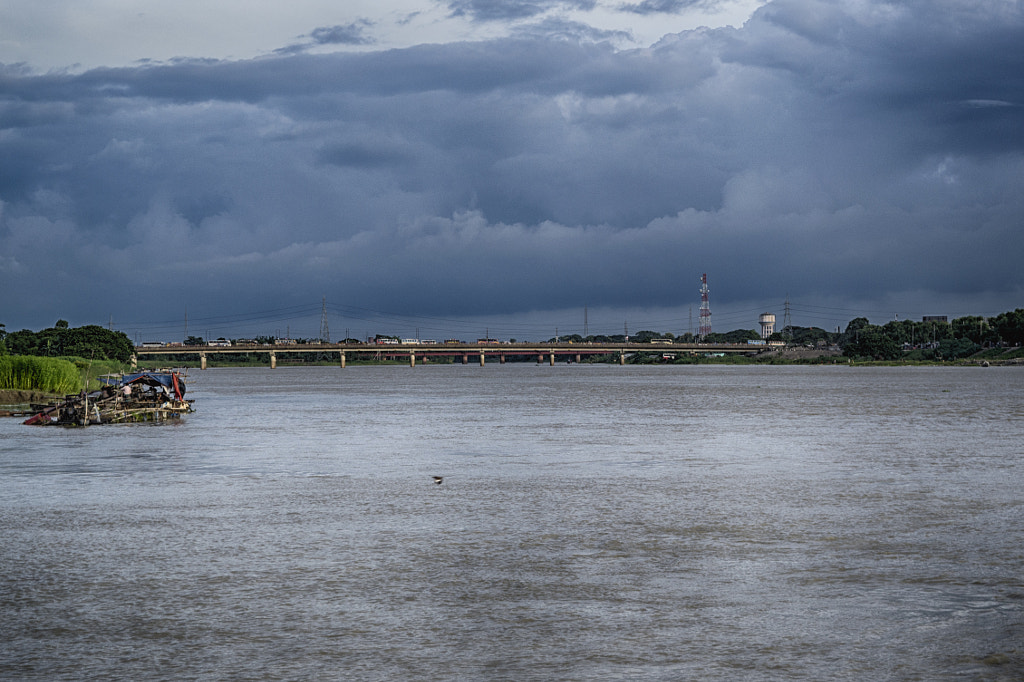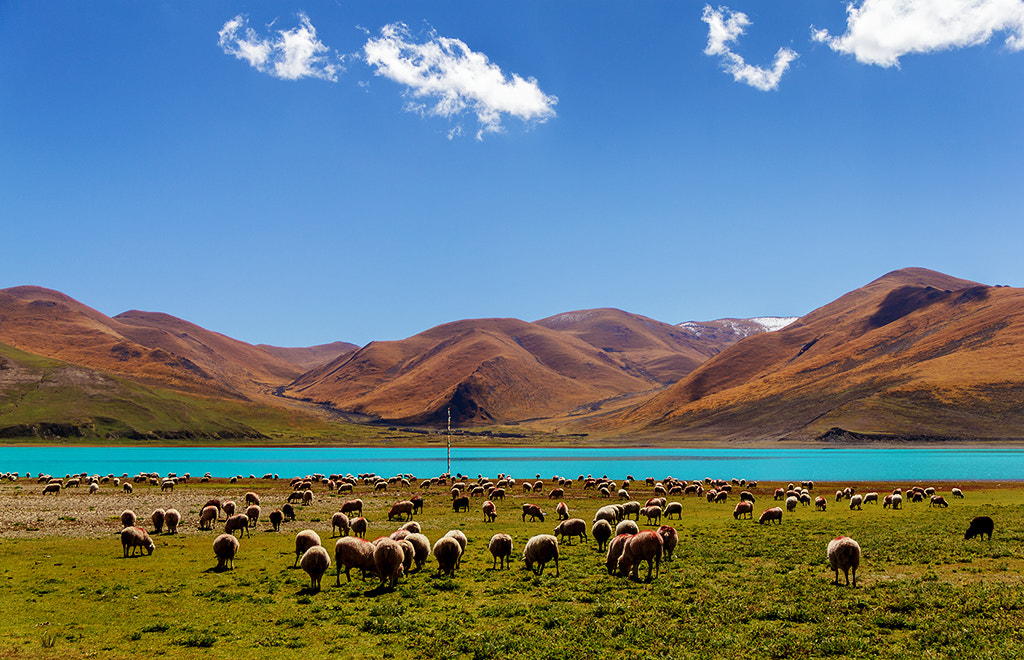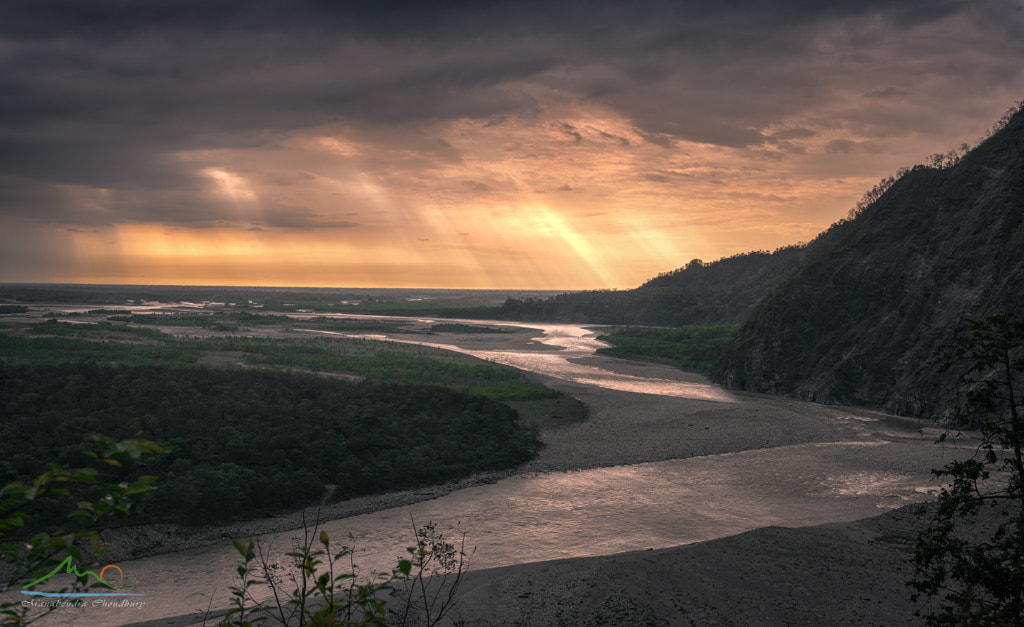Our tour of Assam began and ended on a high note. The freshness of the highlands, the flavor of their cuisine and the tea- a pleasure for sight, smell, and taste for the tea connoisseurs along with the mellow people were all but incomplete without visiting the mighty Brahmaputra river. From the origin to its end, it connects India with China and Bangladesh and Hindu dharma with Buddhism as well as the Bons and Jains. It is also one of the few names of rivers in India which go by a male name as opposed to the others like – Ganga, Saraswati which go by the female name.

Origin and Location Of the Brahmaputra River
With its origin in the Angsi Glacier, located on the northern side of the Himalayas of Tibet as the Yarlung Tsangpo River, it flows across southern Tibet to break through the Himalayas and into Arunachal Pradesh in India. It flows southwest through the Assam Valley as Brahmaputra and south through Bangladesh as the Jamuna. In the vast Ganga Delta, it merges with the Padma, the popular name of the river Ganga in Bangladesh, and finally the Meghna and from here it is known as Meghna before emptying into the Bay of Bengal.

The Brahmaputra River geologically is the youngest among the major rivers in the world yet it is known as a moving ocean. The River Brahmaputra travels 2880 km from its origin in the young Himalayan range through the Tibet and India and finally merges with the sea in Bangladesh by opening its streams like the roots of a large Banyan tree.

The lower reaches are sacred to Hindus. While most rivers on the Indian subcontinent have female names, this river has a rare male name, as it literally means “Son of Brahma” in Sanskrit.
Here we show you the perfect amalgamation of legends of the same river, from its place of origin. to its meandering flow and its end with different religion and people.
The Mystical Tsangpo
The Tibetans believe that long before human occupation, the Chang Tang plateau was covered by the waters of a great lake. A Bodhisattva (an enlightened being) decided that the waters had to flow in order to help the people in the region. So, he cut an outlet through the Himalayas for the Tsangpo or ‘Great River’.

The mountains, gorges, and jungles through which the Tsangpo flows in Tibet are considered extremely holy. Ancient Tibetan scrolls written by sages, speak of sanctuaries or beyuls deep in the Himalayas. Here, aging is slowed down and, animals and plants have miraculous powers. The Tibetans believe that in this area, perhaps through one of the waterfalls at the bottom of the world’s deepest gorge, is the doorway to paradise on Earth, Shangri-la.
The Brahmaputra River in India
The Brahmaputra enters India in the state of Arunachal Pradesh, where it is called Siang. It makes a very rapid descent from its original height in Tibet and finally appears in the plains, where it is called Dihang. It flows for about 35 km (22 mi) and is joined by the Dibang River and the Lohit River at the head of the Assam Valley. Below the Lohit, the river is called the Brahmaputra, enters the state of Assam, and becomes very wide—as wide as 10 km (6 mi) in parts of Assam.

From this confluence point, the river is known as the Brahmaputra till it enters Bangladesh. In India, the journey of the river Brahmaputra is 918 km long.
The Brahmaputra is one of the major rivers of Asia possessing mythological importance. The term ” Brahmaputra” means “son of Brahma” in Sanskrit. Mount Kailash, the origin of Brahmaputra River is the abode of Lord Shiva and Goddess Parvati. The lands and towns along the Brahmaputra River thus attain mythological importance along with the rivers. Koppa Temple at Mansarovar Lake is one of the major visiting spots.
The Buddhists, the Jains and the Bonpas of Tibet too, all respect this river with great fervor and devotion. Therefore, it is not surprising for a devotee to come across the worlds. The Bonpas make an anti-clockwise pilgrimage around Mt. Kailash after a short worship to River Brahmaputra, whereas the believers of the Jain faith specially visit Ashtapad near the southern region of Kailash in the Kailash – Manasarovar region.

Legend has it that Amogha wife of Sage Shantanu had a child by Brahma the creator of the Universe. The child took the form of water. Shantanu placed the child right in the middle of the four great mountains — Kailash, Gandhamadana, Jarudhi, and Sambwartakka. He grew into a great lake, the Brahmakunda.
Parashurama, an incarnation of Lord Vishnu, had committed the terrible sin of killing his own mother because his father had ordered him to. So great was the sin that the axe he used got stuck in his hand!
The sages advised Parashurama to visit holy places. At Brahmakunda he axed down one side of the mountains, releasing the waters to help the locals. This got the name Brahmaputra or Son of Brahma. To Parashurama’s great relief, the Axe came loose and the blood from the Axe was washed off, leaving a reddish tinge in the river. Hence, the name Luit in Assamese (from the Sanskrit word for blood).
It is also called Burha Luit, perhaps because ‘Burha’ meaning old locally, represents the ancientness of the river.
According to another legend, Balarama, Krishna’s brother committed the sin of killing many Brahmins. To wash off his sins, he went on a pilgrimage and visited the confluence of the rivers Brahmaputra and Laskshya. He used his plough to get them to flow and meet yet another river the Dhaleshwari. As this was the place where the plough stopped, it was called Langalbandh.
Interestingly, a dip here during auspicious days is considered equivalent to many dips in other holy places.
It is said that the Brahmaputra wanted to marry Ganga. To test his love, Ganga took on the form of an old woman. When Brahmaputra came he did not recognize Ganga. She got angry and sent him off forever. Later, Ganga allowed the Jamuna to join her. Jamuna is the name for the lower Brahmaputra.
The Brahmaputra and its ecology
The river is prone to catastrophic flooding in spring when the Himalayan snows melt. It is also one of the few rivers in the world that exhibit a tidal bore.
The spring snow melt and summer monsoon bring yearly floods to Kaziranga National Park, that enrich its grasslands and tropical forests, enabling the park to support healthy populations of Bengal tigers, elephants, various deer, wild water buffalo, boar, monkeys, reptiles and birds (both migratory and local). The park’s most famous resident is the Great Indian one-horned rhinoceros.